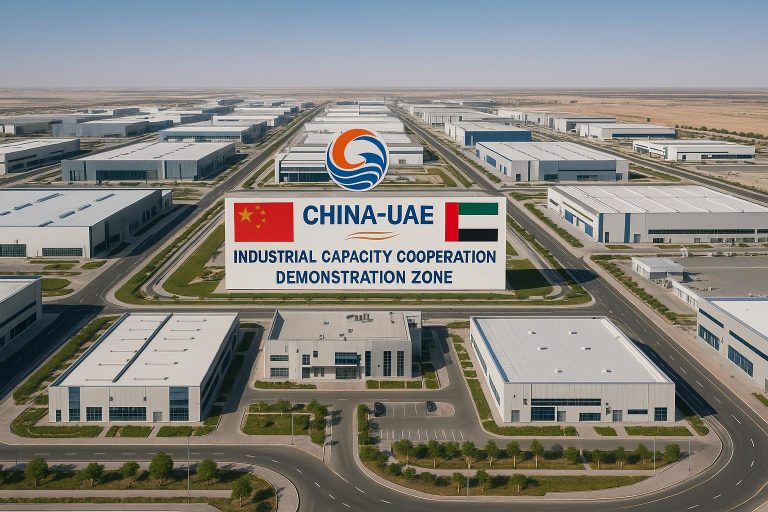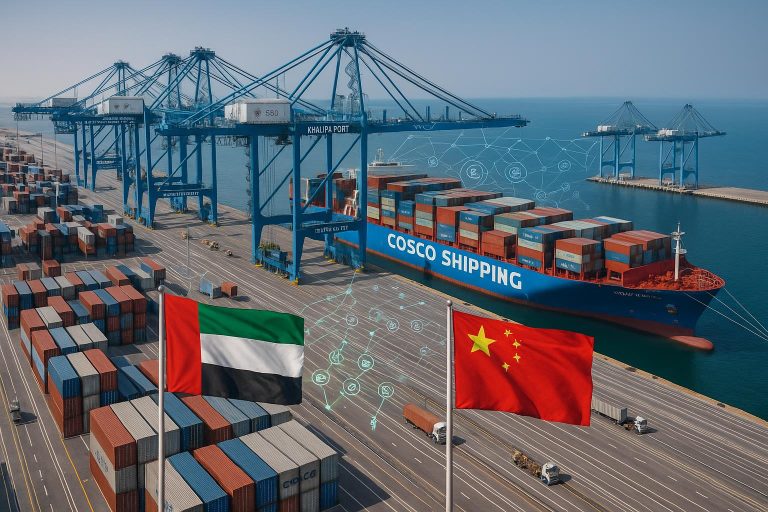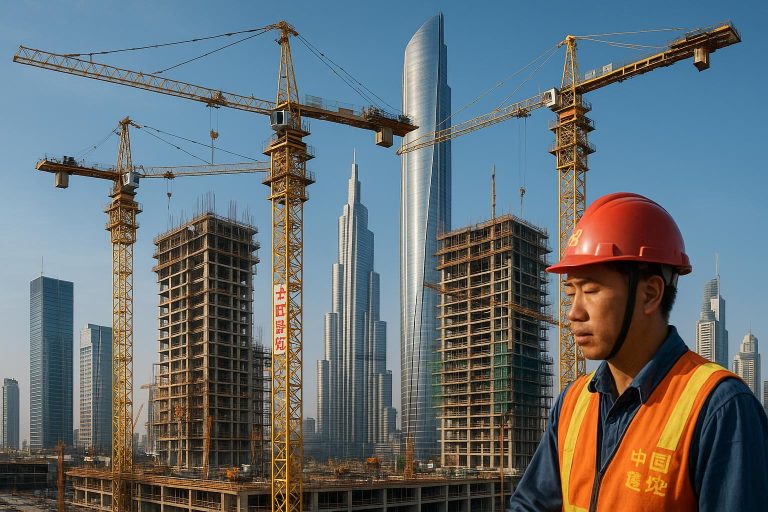A Billion-Dollar Welcome: Strategies and Synergies in Capturing the High-Value Chinese Tourism Market in the UAE.
Executive Summary
The United Arab Emirates (UAE) and China share a robust and rapidly expanding comprehensive strategic partnership, evidenced by record bilateral trade reaching $101.8 billion in 2024. This burgeoning relationship extends significantly into the tourism sector, where the UAE is strategically positioning itself to capture a larger share of the high-value Chinese tourism market. With China remaining the UAE’s largest trading partner and over 15,000 Chinese firms operating within the Emirates, the foundation for enhanced tourism cooperation is exceptionally strong. This article explores the strategies and synergies driving this initiative, highlighting key opportunities such as expanded aviation links, targeted marketing, and investment in hospitality infrastructure. It also addresses critical considerations, including cultural adaptation and competitive landscapes, to ensure sustainable growth. By leveraging existing bilateral frameworks and focusing on tailored experiences, the UAE aims to unlock a projected $1 billion tourism opportunity from China, further solidifying its role as a premier global destination for Chinese travelers.
Introduction
The economic and diplomatic ties between the United Arab Emirates and the People’s Republic of China have evolved into a dynamic and multifaceted comprehensive strategic partnership since its establishment in 2018. This partnership is not merely transactional but deeply rooted in shared visions for economic diversification, technological advancement, and global connectivity. The sheer scale of this relationship is underscored by the remarkable 800-fold growth in bilateral trade since 1984, culminating in a record $101.8 billion in 2024, positioning the UAE as China’s largest export market in the Middle East and its second-largest regional trading partner. Amidst this expansive cooperation, the tourism sector emerges as a pivotal area for strategic growth and mutual benefit. The UAE, renowned for its luxurious offerings, world-class infrastructure, and vibrant cultural experiences, is increasingly turning its attention to the immense potential of the Chinese outbound tourism market. This article delves into the proactive strategies being deployed by the UAE to attract high-value Chinese tourists, examining the existing synergies, identifying key opportunities for further development, and addressing the challenges that must be navigated to realize the full potential of this billion-dollar welcome. It will explore how the UAE’s strategic investments, enhanced connectivity, and cultural understanding are converging to create an irresistible proposition for Chinese visitors, thereby strengthening the broader bilateral relationship.
The Current Landscape of Bilateral Cooperation
The relationship between the UAE and China has transcended traditional trade partnerships to become a comprehensive strategic alliance, formally established in 2018. This elevated status is underpinned by a shared commitment to economic diversification, regional stability, and global connectivity, manifesting in robust bilateral investment and cooperation across numerous sectors. The sheer volume of economic exchange is staggering: bilateral trade reached an unprecedented $101.8 billion in 2024, marking an extraordinary 800-fold increase since 1984. This positions the UAE as China’s largest export market in the Middle East and its second-largest trading partner in the region, while China consistently remains the UAE’s largest trading partner. This deep economic interdependence is further solidified by the presence of over 15,000 Chinese firms operating within the UAE, contributing significantly to the local economy and fostering a vibrant business environment.
Investment flows are equally impressive, with UAE investments in China reaching $4.5 billion by the end of 2023, representing a substantial 96% increase from the previous year. This reciprocal investment underscores a mutual trust and confidence in each other’s economic trajectories. The UAE-China Investment and Economic Cooperation Working Group, along with regular high-level diplomatic engagements, ensures a continuous dialogue and strategic alignment on key initiatives. These foundational elements create a fertile ground for the expansion of tourism, as increased business travel, cultural exchange, and familiarity with each other’s markets naturally lead to greater tourist flows.
Beyond trade and direct investment, cooperation spans critical sectors that indirectly bolster the tourism appeal of the UAE for Chinese visitors. In Energy & Clean Energy, joint ventures in solar and wind power, such as the Masdar-China Silk Road Fund MoU for renewable energy projects in BRI countries, highlight a shared vision for sustainable development. Infrastructure & Logistics cooperation, exemplified by the COSCO terminal at Khalifa Port and the China-UAE Industrial Capacity Zone, positions the UAE as a crucial gateway for China’s Belt and Road Initiative (BRI) in the Gulf. This enhanced connectivity and logistical efficiency not only facilitate trade but also improve accessibility for travelers.
Technology & AI agreements and digital transformation initiatives, including the $5 billion partnership for AI, renewable energy, and infrastructure, contribute to the UAE’s image as a modern, technologically advanced destination. This resonates with tech-savvy Chinese tourists seeking innovative experiences. Furthermore, Trade & Free Zones collaborations, such as JAFZA’s partnerships with Chinese free trade zones and DP World’s extensive collaborations, streamline business operations and foster a welcoming environment for Chinese enterprises and their personnel, many of whom are potential tourists. The broader Finance & Investment landscape, including BRI projects totaling $3.1 billion in the UAE and cross-border investment facilitation, further integrates the two economies, making the UAE a familiar and attractive destination for Chinese capital and, by extension, its citizens. These multifaceted layers of bilateral cooperation collectively form a robust framework that directly and indirectly supports the UAE’s ambition to become a leading destination for high-value Chinese tourism.
Opportunities and Strategic Growth Drivers
The convergence of robust bilateral relations and the UAE’s strategic vision presents significant opportunities for capturing the high-value Chinese tourism market. Several key drivers are poised to accelerate this growth, leveraging existing partnerships and new initiatives.
Firstly, enhanced aviation and transportation links are paramount. The expansion of direct flight routes and increased frequency between the UAE and China are critical facilitators. Emirates and Air China’s Memorandum of Understanding (MoU) for enhanced partnership and route expansion, coupled with Emirates expanding its Chinese mainland network to five gateways including Hangzhou, directly addresses the need for greater accessibility. Furthermore, the visionary $1 billion deal between the UAE and China for 350 flying taxis (eVTOL aircraft) signifies a commitment to future-forward transportation solutions that could appeal to discerning Chinese travelers seeking novel experiences. The General Civil Aviation Authority (GCAA) delegation to China for technical and commercial aviation collaboration further underscores the strategic importance placed on air connectivity.
Secondly, targeted tourism and hospitality investments are directly aimed at the Chinese market. The upcoming 2025 China-GCC tourism trade fair in Dubai is a clear indicator of the UAE’s intent to engage directly with Chinese tourism stakeholders. The UAE is actively targeting a $1 billion tourism opportunity from China, a goal supported by initiatives such as China Tourism Group exploring UAE hospitality sector investments. This includes a focus on developing tourist resorts, shopping centers, and hospitality infrastructure tailored to Chinese preferences, ensuring a comfortable and familiar experience for visitors.
Thirdly, the broader economic and digital cooperation between the two nations creates a conducive environment for tourism growth. The UAE-China $5 billion partnership for AI, renewable energy, and infrastructure positions the UAE as a hub of innovation, which can be a significant draw for tech-savvy Chinese tourists. Digital transformation initiatives, such as Digital Dubai exploring AI and smart city technologies in Shenzhen, enhance the visitor experience through smart services and seamless connectivity. The presence of over 15,000 Chinese firms in the UAE also means a substantial expatriate community and frequent business travelers who often combine business with leisure, or whose visits pave the way for family and friends to explore the Emirates.
Fourthly, logistics and supply chain advancements contribute indirectly but significantly. JINGDONG Property‘s first Middle East logistics hub in Dubai and JD.com’s implementation of smart supply chain technologies reinforce the UAE’s position as a critical logistics hub for China-Middle East trade. This robust logistical infrastructure not only supports trade but also ensures efficient movement of goods and services, which can translate into better-stocked retail environments and seamless travel experiences for tourists.
Finally, cultural understanding and tailored experiences are emerging as crucial growth drivers. The UAE’s efforts to understand and cater to Chinese cultural nuances, preferences for specific services, and payment methods (e.g., cross-border payment cooperation between China’s CIPS and the UAE central bank) are vital. By offering Mandarin-speaking staff, Chinese payment options, and culturally relevant attractions, the UAE can significantly enhance its appeal. The focus on new economy sectors, entrepreneurship, and innovation also aligns with the aspirations of many modern Chinese travelers, who seek more than just traditional sightseeing but also opportunities for learning and unique engagement. These multifaceted strategies, from direct flight enhancements to cultural tailoring, collectively form a powerful framework for capturing the high-value Chinese tourism market.
While the opportunities for the UAE to capture the high-value Chinese tourism market are substantial, several challenges and critical considerations must be addressed to ensure sustainable and robust growth. Navigating these complexities requires strategic foresight and adaptive policies.
Firstly, intense regional and global competition poses a significant challenge. Many countries and destinations worldwide are actively vying for the lucrative Chinese outbound tourism market. Destinations in Southeast Asia, Europe, and other parts of the Middle East offer diverse attractions, often with established infrastructure and marketing strategies specifically targeting Chinese travelers. The UAE must continuously innovate its offerings and differentiate itself to stand out in this crowded global marketplace. This includes not only luxury and entertainment but also unique cultural experiences and niche tourism segments that appeal to the evolving preferences of Chinese tourists.
Secondly, cultural adaptation and communication barriers can impact the visitor experience. While the UAE has made strides in accommodating Chinese tourists, ensuring a truly seamless and culturally sensitive experience requires ongoing effort. This includes widespread availability of Mandarin-speaking staff in hotels, attractions, and retail outlets, as well as culturally appropriate dining options and entertainment. Understanding and respecting Chinese customs, traditions, and holiday patterns are crucial for effective marketing and service delivery. Furthermore, while digital transformation is a strength, ensuring that digital platforms and payment systems (beyond the existing cross-border payment cooperation) are fully integrated and user-friendly for Chinese visitors, who are accustomed to advanced mobile payment ecosystems, is vital.
Thirdly, infrastructure and capacity management present considerations, particularly during peak travel seasons. While the UAE boasts world-class infrastructure, a significant surge in Chinese tourist numbers could strain certain facilities, including popular attractions, transportation networks, and accommodation options. Strategic planning for capacity expansion and visitor flow management will be essential to maintain high service standards and prevent overcrowding, which could detract from the visitor experience. This also extends to ensuring sufficient visa processing capabilities and efficient entry procedures to handle increased demand.
Fourthly, geopolitical and economic fluctuations can influence outbound tourism trends. Global economic slowdowns, regional instabilities, or changes in international travel policies can impact Chinese tourists’ willingness or ability to travel. The UAE, while maintaining strong bilateral ties, must remain agile in its tourism promotion strategies to mitigate potential external shocks. Diversifying source markets while focusing on China can provide a balanced approach.
Finally, perceptions and awareness among potential Chinese tourists about the UAE’s offerings need continuous cultivation. While Dubai and Abu Dhabi are increasingly recognized, broader awareness of the UAE’s diverse emirates and their unique attractions may still be developing. Targeted marketing campaigns that highlight the safety, modernity, cultural richness, and variety of experiences beyond shopping and luxury will be crucial to broaden appeal and attract repeat visitors. Addressing these challenges proactively will be key to unlocking the full potential of the Chinese tourism market and ensuring the UAE remains a preferred destination.
Case Study Spotlight
To illustrate the tangible efforts in attracting Chinese tourism, the 2025 China-GCC Tourism Trade Fair in Dubai serves as a prime example. This upcoming event is not merely a convention but a strategic platform designed to foster direct engagement between Chinese tourism operators, investors, and their counterparts in the UAE and the broader Gulf Cooperation Council (GCC) region. It signifies a proactive and collaborative approach to understanding and catering to the Chinese market. The fair will facilitate discussions on market trends, showcase diverse tourism products, and explore investment opportunities in hospitality infrastructure, such as tourist resorts and shopping centers, which are particularly appealing to Chinese visitors. Furthermore, the active exploration by China Tourism Group into UAE hospitality sector investments underscores the confidence and mutual interest in developing tailored offerings. These initiatives, combined with enhanced aviation links like Emirates expanding its network to five Chinese gateways, demonstrate a concerted effort to create a welcoming and accessible environment for Chinese tourists, transforming strategic intent into concrete action and investment.
Future Outlook and Strategic Recommendations
The future of Chinese tourism in the UAE is poised for significant growth, driven by the deepening bilateral relationship and strategic initiatives. To fully capitalize on the projected $1 billion tourism opportunity from China, the UAE should focus on several key strategic recommendations:
Firstly, diversify and personalize tourism offerings. While luxury and shopping remain strong draws, Chinese tourists, particularly younger generations, are increasingly seeking unique, experiential, and culturally immersive travel. The UAE should expand its portfolio to include eco-tourism, adventure travel, cultural heritage tours beyond the major cities, and health and wellness retreats. Tailoring packages to specific segments, such as family travel, MICE (Meetings, Incentives, Conferences, and Exhibitions) tourism, and educational tours, will broaden appeal. Leveraging the UAE’s growing reputation in technology and AI, as seen with G42’s strategic positioning and Digital Dubai’s initiatives, could lead to innovative, tech-enhanced visitor experiences.
Secondly, enhance digital engagement and payment solutions. Chinese tourists are highly digitally native, relying heavily on platforms like WeChat, Alipay, and Douyin for travel planning, communication, and payments. The UAE tourism sector must deepen its integration with these platforms, offering seamless booking, navigation, and payment experiences. This includes expanding the cross-border payment cooperation between China’s CIPS and the UAE central bank to ensure ubiquitous acceptance of Chinese mobile payment systems across all tourist touchpoints. Targeted digital marketing campaigns, utilizing Chinese social media influencers and key opinion leaders (KOLs), will be crucial for effective outreach.
Thirdly, invest in human capital and cultural literacy. To provide truly exceptional service, there is a need for continued investment in training tourism professionals in Mandarin language proficiency and Chinese cultural etiquette. This extends beyond frontline staff to include tour guides, hotel management, and retail associates. Developing specialized training programs that focus on understanding Chinese consumer behavior and service expectations will elevate the overall visitor experience and foster a sense of welcome and belonging.
Fourthly, strengthen regional connectivity and multi-destination packages. As the UAE positions itself as China’s Gulf gateway, promoting multi-destination itineraries that combine the UAE with other GCC countries could appeal to Chinese tourists seeking broader regional exploration. This requires enhanced collaboration with regional tourism boards and airlines to create seamless travel experiences. The expansion of Emirates’ network to five Chinese gateways already lays a strong foundation for this.
Finally, leverage the broader bilateral economic framework. The extensive cooperation in sectors like healthcare (Mubadala’s acquisition in China), agriculture (Silal and Shouguang Vegetable Group’s smart agricultural project), and logistics (JINGDONG Property’s hub in Dubai) creates a large ecosystem of Chinese residents and business travelers in the UAE. These individuals represent a significant segment for repeat tourism and word-of-mouth promotion. Developing loyalty programs and community engagement initiatives for this resident Chinese population can turn them into powerful advocates for UAE tourism. The ongoing high-level visits and diplomatic engagements further solidify the trust and partnership necessary for long-term tourism growth.
By proactively implementing these strategic recommendations, the UAE can not only capture the high-value Chinese tourism market but also reinforce its position as a global tourism leader, fostering deeper cultural understanding and economic prosperity within the comprehensive strategic partnership.
Conclusion
The strategic partnership between the UAE and China has created an unparalleled foundation for the growth of Chinese tourism in the Emirates. With bilateral trade reaching record highs and extensive cooperation across diverse sectors, the UAE is uniquely positioned to welcome high-value Chinese tourists. By focusing on enhanced aviation connectivity, targeted hospitality investments, seamless digital integration, and a deep understanding of Chinese cultural preferences, the UAE can effectively capture the projected $1 billion tourism opportunity. While challenges such as global competition and the need for continuous cultural adaptation exist, the proactive strategies and synergistic efforts outlined in this article demonstrate the UAE’s commitment to becoming a premier destination for Chinese travelers. This endeavor not only promises significant economic returns but also strengthens the bonds of friendship and mutual understanding between these two dynamic nations, ensuring a prosperous future for their comprehensive strategic partnership.
References
[1] UAE-China Bilateral Investment Research Findings (Provided Research Data)
[2] Emirates and Air China MoU for enhanced partnership and route expansion (Provided Research Data)
[3] UAE-China $1 billion deal for 350 flying taxis (eVTOL aircraft) (Provided Research Data)
[4] 2025 China-GCC tourism trade fair in Dubai (Provided Research Data)
[5] China Tourism Group exploring UAE hospitality sector investments (Provided Research Data)
[6] JINGDONG Property’s first Middle East logistics hub in Dubai (Provided Research Data)
[7] China’s CIPS and UAE central bank cross-border payment cooperation (Provided Research Data)
[8] G42’s strategic positioning between US and China markets (Provided Research Data)
[9] Digital Dubai exploring AI and smart city technologies in Shenzhen (Provided Research Data)
[10] Mubadala acquired 100% ownership of UCB Pharma’s mature business in China (Provided Research Data)
[11] Silal and China’s Shouguang Vegetable Group: $33 million smart agricultural project (Provided Research Data)
[12] UAE targeting $1 billion tourism opportunity from China (Provided Research Data)
[13] Bilateral trade reached record $101.8 billion in 2024 (Provided Research Data)
[14] Comprehensive strategic partnership established in 2018 (Provided Research Data)
[15] Over 15,000 Chinese firms now operate in UAE (Provided Research Data)
[16] UAE investments in China reached $4.5 billion by end of 2023 (Provided Research Data)
[17] Belt and Road Initiative projects ($3.1 billion in UAE) (Provided Research Data)







